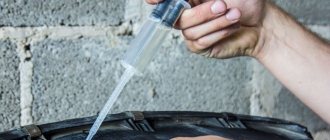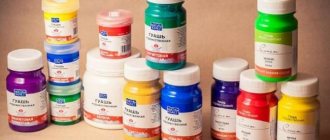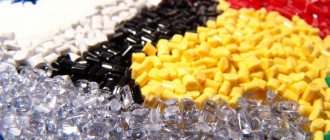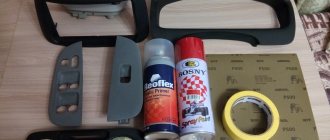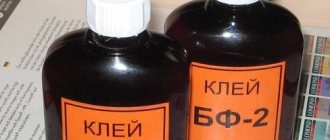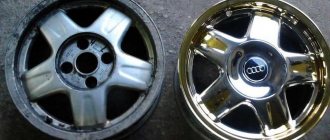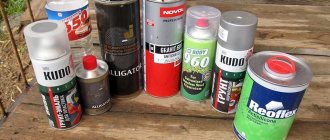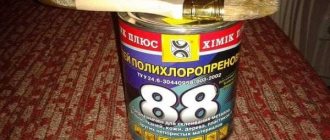Description and technical specifications
Liquid plastic is a one-component transparent polymer with low viscosity. It has the properties of diffuse welding, almost instantly connects elements, creating a strong monolithic seam, almost invisible during external inspection. The frozen mass has the following characteristics:
- resistance to temperature changes;
- low heat conductivity;
- resistance to aggressive environmental influences;
- UV resistance;
- high strength;
- environmental friendliness;
- safety;
- long-term color retention.
In terms of composition, it is liquid plastic, which, penetrating into the structure of the parts being connected, after polymerization forms a monolithic connection with an even, dense structure.
After application, the mixture sets in 2-4 minutes, and complete hardening, providing maximum strength, occurs within a day.
Scope and limitations
Plastic polymer can replace most adhesives. The substance perfectly connects:
- plexiglass;
- polycarbonate;
- polyvinyl chloride;
- plastic;
- rigid PVC with seals and aluminum profile;
- polystyrene;
- polyethylene terephthalate glycol.
Some varieties of the product are suitable for bonding leather, glass, rubber, metal or ceramics.
More often, liquid plastic glue is used for PVC panels, when installing slopes, sealing seams, securing flashings and other window elements.
Despite its versatility, this series of adhesives has some limitations in use. It is not advisable to glue:
- Parts that will be in constant contact with water. The adhesive formula is not suitable for regular exposure to water.
- Porous materials, such as foam baseboards. The structure of foam plastic or other similar bases does not allow for high-quality diffuse welding. If you need to glue porous substrates, then before doing this they need to be treated with a special impregnation.
- Parts with different thermal expansion. If the thermal expansion of the elements being glued differs from the parameters of the glue, then over time the liquid plastic may peel off.
- Polypropylene. The material has low chemical inertness, so the adhesive does not provide full diffusion. During operation, the strength of the seams may decrease.
- Metal. Metal parts must have a plastic coating, otherwise the polymer will peel off.
If plastic connections are needed, then the product is not suitable. The adhesive composition is intended for making hard technical seams.
A little about spray cans
Paints and varnishes in aerosol cans
A small plastic object can be painted with paint and varnish material in an aerosol can. Since the entry of air into the container is completely excluded, there can be no film.
Advantages of using aerosol paint:
High degree of adhesion to plastic.- It is easy to apply dye to all hard-to-reach places.
- Small parts will be covered in an even layer.
- No additional tools are required for painting work.
- The can can be easily delivered to any distance.
A similar painting method is often used for polyvinyl chloride surfaces in car interiors, but to ensure that the coating is uniform and even, and distributed over the entire area, experience is still required. Pre-training won't hurt.
Additional protection
Acrylic varnish for plastic has excellent adhesion to PVC. But you can increase the service life of the coating if you additionally protect it with a glossy water-based plastic varnish. Moreover, the product gets a beautiful appearance and shine. Such additional protection will be relevant for windows and window sills in the kitchen.
The impact of negative factors will further decrease. The protective layer should be applied with a brush, and there will be no difficulties in the work, and therefore the varnish can be applied with your own hands. If a plastic pipe or window sill is located close to a fire source, then they should be coated with fire-retardant paint and varnish material. These are special compounds that are required for painting metals.
Details for painting plastic
Before painting PVC products, you should calculate the required volume of dye. By measuring the area to be painted, you can calculate the consumption of the varnish composition. You will also need to look at the consumption data on the can, and the sales consultant will help you calculate how much paint you should buy.
Despite the high cost, polyurethane-acrylic varnish is cost-effective. Since only one layer of application of the product is enough, the consumption of material will be small, and the coating will become durable, and thus the expenses will be justified over the years of service. The coating can last a long time if the dye is applied in compliance with the technology. Polyurethane-acrylic compounds are environmentally friendly and do not contain hazardous components to health. For this reason, they can be used in children's rooms, catering buildings and hospitals.
Types and approximate prices in Moscow
Despite the fact that plastic sealant was created relatively recently, the building materials market offers many varieties of polymer mixtures. They differ only slightly in additional characteristics.
Liquid glue Cosmofen
Adhesive for plastic windows Cosmofen is made on the basis of dissolved white PVC glue. Strongly connects parts when installing windows, increases thermal insulation. The Weiss company produces a line of Cosmofen liquid plastic mixtures for windows. Popular brands of sealants:
- Cocmofen 345. Used for sealing elements on rigid polyvinyl chloride. Cosmo PVC adhesive forms a compound that is resistant to aging.
- Cosmofen Plus. A quick-setting white mixture is used for fastening PVC window parts. Durable, easy to apply.
Liquid plastic glue Cosmofen Plus white 200 g costs from 270 rubles, and Cocmofen 345 – from 420 rubles.
Adhesive-sealant Masterteks
White polymer, weather resistant, universal. The adhesive sealant creates a strong monolithic connection.
Mastertex liquid plastic is available in tubes of 230 g. The cost of the product is from 300 rubles.
Lazer Bond
Lazer Bond liquid plastic glue liquid resin holds the bases together in 3 seconds. The kit includes an ultraviolet lamp, under the light of which the glue cures. Can be used when installing windows, for connecting parts made of metal, copper, leather or PVC. Laser Bond costs from 290 rubles. for 60 years
5 Second Fix
The manufacturer claims that 5 Second Fix liquid adhesive plastic connects any materials, including metal or combined substrates. Polymerization occurs in 5 seconds under the influence of an ultraviolet lamp, sold complete with glue. After hardening, the seam can be sanded or painted without compromising strength. The price of the product is from 490 rubles.
Nano glue liquid plastic
The packaging states that this is a super-strong plastic adhesive that can withstand loads of up to 160 kg. Nano plastic hardens under the influence of UV radiation from a light bulb, which is included in the kit. Does not leave stains and does not stick to your hands.
A device with a mixture dispenser and a built-in UV lamp is sold at a price starting from 1999 rubles.
GreenteQ PVC glue
Designed for fastening parts made of solid PVC. Heat-resistant, immune to ultraviolet radiation.
Used in the window industry or for plumbing installation.
Costs from 250 rubles.
Bondic
The package is a miniature welding tool with a UV emitter. The fill with a transparent base polymerizes only under the influence of ultraviolet radiation, becoming an almost eternal sealant. Glues any materials. Costs from 2000 rub.
Details
Composition of polyurethane-acrylic varnish
All the characteristics that are listed above and are absolutely necessary are possessed by a water-based polyurethane-acrylic composition for coloring polyvinyl chloride. The manufacturer offers PaliPlast RP 2040 base for use. This is a semi-matte type acrylic for the basic PVC composition in white, which in the future can be tinted in the required color during work. The result of the work will be a uniform coating that is not subject to deformation. The paint material dries quickly.
Special additives are usually added to the composition, which makes it possible to create different texture coatings. You can add pigments yourself and get the desired shade. You should select a color from the 2,000 shades proposed by the manufacturer. You can find both traditional methods of design in color and unusual solutions - sometimes glitter is added to the composition, and a metallic color is chosen, or a pearl-colored coating is applied. Such coloring of the polyvinyl chloride profile helps to add uniqueness and originality to the building or even its facade.
The coating can last at least 10 years with daily use, and since the paint and varnish material is non-toxic, it will even be in a room where the ventilation system is terrible. A polyurethane-acrylic composition will create molecular adhesion on the plastic, which will make it possible not to remove the gloss from the surface being painted, but to apply a new material on top. It is important that the coating will be of the same quality wherever the polyvinyl chloride is painted - in the home or in the production workshop.
Steps for preparing the surface for applying paints and varnishes
Polymer coating varnish must be applied correctly. Whatever you paint - doors, window sills or windows, any plastic surface should be prepared in advance.
Preparation work should be done in stages:
- With a plastic structure, you should remove objects that will be attached to it and interfere with painting. These are mosquito nets, blinds, ebbs and curtains.
- Use compressed air to remove dust from the plastic.
- The surface should be thoroughly cleaned of grease stains and mechanical contamination.
- Construction-type adhesive tape is required to cover rubber seals on the surface of windows and various fittings so that paint and varnish composition does not inadvertently get on them.
- Cover the glass with plastic wrap or newspaper.
- At the stage of cleaning and degreasing the plastic surface, it is worth using special activator cleaners that are required for plastic. Before painting polyvinyl chloride, it should be wiped with a cloth soaked in cleaner. After this, wait at least 5 minutes and no more than 10 minutes for the surface to dry and for the applied composition to evaporate. Then you can start painting the polyvinyl chloride.
- If the plastic surface is scratched, has roughness, or unevenness, then all defects will be removed using putty. The surface must be puttied, sanded with fine-grained sandpaper and primed. All the work is not complicated and you can do everything yourself, but if you are not sure, then the best option would be to contact the experts.
Now a little about the coloring method.
Method of painting PVC surfaces
Dyes for polyvinyl chloride should be applied to the surface using a spray gun. Pre-paint polyurethane-acrylic material should be completely prepared, add pigment and mix until a homogeneous composition is formed. Tinting is carried out before coloring begins, and the viability of the dye after mixing with hardeners is confirmed for two hours.
After this, you should fill the spray gun with it and pass it through a funnel-shaped filter. When a factory container of materials is opened, there may often be a film on its surface. It must be removed and not mixed with dyes. The film-type composition has solid particles of an insoluble type, and if you do not remove them, the spray gun will constantly become clogged.
The consistency of the paint and varnish material will resemble thick sour cream, and everything should be diluted with water (add no more than 10%). Viscosity should be checked using the VZ-6 device, and the recommended viscosity level is 30 s.
Helpful advice! If the acrylic-polyurethane material managed to freeze during storage, then after it thaws all technological characteristics will be lost. For this reason, it will be unsuitable for further use.
Work should be carried out in warm, dry weather. The thermometer should show at least +6 degrees, and the air humidity should be no more than 80%. High air temperatures are unacceptable. The thickness of the application of paint and varnish material should be from 80 to 120 microns. After application, the dye will not flow off a vertical surface and adheres well.
Usually one layer of coating is enough, but if necessary, you can repeat the coloring. The second layer is applied at the moment when the previous one has become semi-matte. If the air temperature is approximately +10 degrees, then it is enough to wait 1/3 hour between applying layers. After 2.5 hours the coating will become dense, and after two days the material will dry completely.
In special industrial workshops, plastic products will be dried at a temperature of +55 degrees. This technology is called forced drying, and the paint dries completely in 2 hours.
Metallic coating technology
The metallic effect on the plastic surface is achieved in the following ways:
- The process will proceed with the application of two layers - the first (paint with a “metallic” effect with a thickness of 60 to 80 microns), but the second is colorless for polyvinyl chloride with a thickness of 60 to 80 microns. Between applying layers, it is worth waiting for drying time of approximately 3.5 hours.
- We apply one layer, and first you should prepare metallic paint, and it should contain 20% of a transparent varnish composition, and the plastic will be covered with a material with a thickness of 60 to 80 microns.
What is enamel liquid plastic for?
But liquid plastic is not always glue. Plastic primers or paints are also available, for example:
- enamel primer PS-160;
- enamel Dufa Kunststoff Flussig.
A polymer mixture that combines the qualities of enamel and primer is needed for painting in a humid or aggressive atmospheric environment.
Not suitable for gluing elements or filling cracks.
The use of two-component compositions for pouring into molds
This type of liquid plastic contains 2 components. It is used for several purposes - the creation of architectural elements and various creative objects.
As a result of mixing the 2 components, a fluid substance is obtained, which, after pouring into the mold, quickly hardens. The process takes a few minutes. As a result, the composition takes on a glassy state.
Thanks to the fluidity of two-component plastic, it is possible to reproduce the smallest elements and recreate certain textures.
Advantages and disadvantages of liquid plastic glue
Like any product, plastic glue has advantages and disadvantages. The advantages of the composition include:
- environmental friendliness;
- no color changes under the influence of external factors;
- hermetic filling of cracks and joints;
- greater strength after hardening due to diffuse welding (a monolithic part is formed);
- smoothing out all irregularities and gaps;
- resistance to sunlight;
- the ability to use household chemicals to care for glued surfaces;
- protection against fungus or mold.
Liquid glue for plastic has few disadvantages:
- Fast polymerization. You need to have time to distribute the product and combine the selected elements in a minute. A long delay causes the mixture to turn into a film and it is impossible to form a seam.
- Presence of toxic compounds. While the dried polymer is environmentally friendly and safe, the liquid composition has a strong, unpleasant odor that causes headaches or breathing problems. You have to work in a respirator in rooms with good ventilation.
- Inability to seal in areas frequently in contact with water.
A relative disadvantage is incomplete versatility. The glue is not suitable for creating elastic seams; it does not bond porous materials well without the additional use of special impregnations.
For wood
The main purpose of liquid plastic for wood is to prevent structural erosion and prevent rotting processes. For this purpose, various water-acrylic compositions are used. This paint is environmentally friendly, has no harmful effects on health and is odorless, which allows it to be used indoors.
After the liquid plastic dries, a plastic film forms on the surface, preventing moisture from entering the wood. Also, the use of such protection helps prevent the appearance of pests. The elastic film is resistant to temperature changes, chemical and mechanical influences. The color of the paint does not fade over time.
Technology of use
You can't glue it right away. First you need to prepare the grounds:
- remove contaminants;
- dry;
- degrease;
- wipe with a lint-free cloth (remaining lint on the base will interfere with adhesion).
As a degreaser, it is better to use a product of the same brand as the glue.
Sometimes craftsmen use acetone for degreasing. The solvent prepares substrates well, but is not suitable for all materials (some are destroyed when interacting with the acetone component).
After degreasing and drying, you can begin applying the polymer. Algorithm of work using the example of sealing seams of plastic windows:
- squeeze out a thin strip of product from the tube along the entire length of the gap (do not smear the material);
- Now wait fifteen minutes until it hardens.
Sealing of joints or gaps is completed.
When finishing slopes, gluing of parts will be required. Then, after distributing the glue over the base, you need to apply the element and hold it for a while. Then you will need to wait for the composition to dry.
Instructions for using liquid plastic
• The required amount of glue is squeezed out of the tube onto the junction of the elements and distributed in a thin layer.
• To distribute the composition over the surface, it is better to use rubber gloves soaked in acetone.
• There is no need to rub liquid plastic into the joint. The composition is applied in small strips of 30 cm to prevent hardening of part of the seam. When applying water-based plastic, use a brush, roller or spray gun. The glue dries within 15 minutes.
• Before work, wear a protective mask to avoid inhaling sealant vapors. If you have allergic reactions, you should avoid working with this material.
If you have no experience working with such compounds, it is better to practice on waste from the installation of window sills before starting work.
Precautionary measures
Plastic window adhesive contains cyanoacrylate. It is a harmful chemical that becomes inactive after polymerization. When working with polymer, you must follow safety precautions:
- carry out gluing in special clothing (gloves, respirator, goggles);
- provide ventilation of the premises during polymerization;
- Do not use plastic sealant near open fire (contains flammable substances).
People prone to allergies or suffering from chronic lung diseases should not work with polymerizing plastic mixtures.
Expert advice
Working with polymer sealant is not difficult, but beginners encounter minor flaws that affect the quality of the result. Here are some professional tips to avoid this:
- Speed and attentiveness. The application site must be selected in advance, and then the required amount of mass must be squeezed out of the tube.
- Avoid foamed surfaces. After the foam subsides, the frozen plastic becomes deformed.
- Don't rush into exploitation. Hardening occurs after 15-20 minutes, but the diffuse welding is not yet strong. You can use the fastened structure no sooner than after 24 hours.
Using a plastic composition, you can make window slopes or repair household items.
Liquid plastic is almost universal and provides instant fixation. The product is moisture-resistant, durable and does not lose color under the influence of the sun.
Polyurethane compounds
Experts say that polyurethane varnish for plastic or acrylic-polyurethane solution is the most suitable for protecting this material. However, it should not contain latex additives, since latex is not suitable for treating plastic substrates. Polyurethane varnish is available in matte, glossy and semi-gloss. It is important to pay attention that among the characteristics of the mixture there is a protective filter against ultraviolet rays, thanks to this the plastic and varnished layer will not turn yellow over time, so the product can even be placed in the sun.
A unique product for repairing leather products! just apply...
After applying the polyurethane varnish and drying it, a strong and elastic film is formed on the plastic part, which protects the surface from scratches and abrasion. The varnished surface is much easier to clean and wash using household chemicals that will not harm the surface or impair the protective characteristics of the varnished layer. Varnishing in several layers using a glossy composition will create a very attractive decorative coating.
The use of water-based polyurethane varnish provides undeniable advantages, the main one of which is environmental friendliness and safety for human health, since the composition does not contain harmful organic solvents. Water-based varnishes are made with virtually no odor.
Many people are interested in what is the best varnish for plastic: matte, semi-gloss or glossy? This will depend on the decorative task. The glossy coating reflects light well, making the surface mirror-like and shiny. And the matte surface has practically no shine, thanks to which the depth of the material’s shade is better conveyed.
During operation, various defects and damages, such as chips, scratches, and abrasions, are more noticeable on the glossy layer. And on a matte varnish film, defects are almost invisible.
